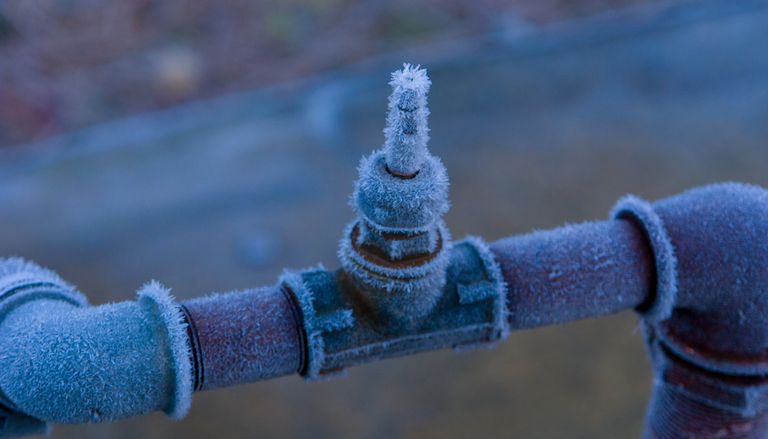Preventing Frozen Plumbing in Winter: Essential Advice
Preventing Frozen Plumbing in Winter: Essential Advice
Blog Article
Just how do you actually feel in regards to Helpful Tips to Prevent Frozen Pipes this Winter?

Winter can ruin your plumbing, especially by freezing pipelines. Here's exactly how to prevent it from happening and what to do if it does.
Intro
As temperatures decrease, the danger of icy pipelines boosts, possibly leading to pricey repair services and water damage. Recognizing just how to stop frozen pipes is crucial for homeowners in cool climates.
Avoidance Tips
Protecting vulnerable pipelines
Wrap pipes in insulation sleeves or use heat tape to shield them from freezing temperatures. Concentrate on pipelines in unheated or exterior locations of the home.
Home heating techniques
Keep indoor rooms sufficiently warmed, especially locations with pipes. Open up closet doors to enable warm air to distribute around pipes under sinks.
Just how to determine frozen pipes
Seek lowered water flow from taps, unusual smells or sounds from pipes, and noticeable frost on subjected pipes.
Long-Term Solutions
Architectural modifications
Take into consideration rerouting pipes away from outside walls or unheated locations. Include added insulation to attics, basements, and crawl spaces.
Updating insulation
Invest in top notch insulation for pipes, attic rooms, and walls. Proper insulation aids keep constant temperature levels and lowers the threat of frozen pipes.
Shielding Outdoor Pipes
Yard hose pipes and outdoor faucets
Disconnect and drain pipes garden tubes before wintertime. Install frost-proof spigots or cover outdoor taps with insulated caps.
Comprehending Frozen Pipes
What creates pipes to ice up?
Pipelines ice up when exposed to temperatures below 32 ° F (0 ° C) for prolonged periods. As water inside the pipes freezes, it expands, taxing the pipeline wall surfaces and potentially triggering them to break.
Dangers and problems
Frozen pipelines can lead to supply of water interruptions, residential property damage, and pricey fixings. Burst pipelines can flood homes and create comprehensive structural damages.
Indicators of Frozen Water Lines
Identifying frozen pipes early can avoid them from bursting.
What to Do If Your Pipelines Freeze
Immediate actions to take
If you think icy pipelines, keep faucets available to relieve pressure as the ice melts. Make use of a hairdryer or towels taken in warm water to thaw pipes slowly.
Conclusion
Avoiding frozen pipes requires aggressive procedures and quick actions. By comprehending the causes, indications, and preventive measures, homeowners can shield their pipes during winter.
5 Ways to Prevent Frozen Pipes
Drain Outdoor Faucets and Disconnect Hoses
First, close the shut-off valve that controls the flow of water in the pipe to your outdoor faucet. Then, head outside to disconnect and drain your hose and open the outdoor faucet to allow the water to completely drain out of the line. Turn off the faucet when done. Finally, head back to the shut-off valve and drain the remaining water inside the pipe into a bucket or container. Additionally, if you have a home irrigation system, you should consider hiring an expert to clear the system of water each year.
Insulate Pipes
One of the best and most cost-effective methods for preventing frozen water pipes is to wrap your pipes with insulation. This is especially important for areas in your home that aren’t exposed to heat, such as an attic. We suggest using foam sleeves, which can typically be found at your local hardware store.
Keep Heat Running at 65
Your pipes are located inside your walls, and the temperature there is much colder than the rest of the house. To prevent your pipes from freezing, The Insurance Information Institute suggests that you keep your home heated to at least 65 degrees, even when traveling. You may want to invest in smart devices that can keep an eye on the temperature in your home while you’re away.
Leave Water Dripping
Moving water — even a small trickle — can prevent ice from forming inside your pipes. When freezing temps are imminent, start a drip of water from all faucets that serve exposed pipes. Leaving a few faucets running will also help relieve pressure inside the pipes and help prevent a rupture if the water inside freezes.
Open Cupboard Doors
Warm your kitchen and bathroom pipes by opening cupboards and vanities. You should also leave your interior doors ajar to help warm air circulate evenly throughout your home.

I stumbled upon that page about How to prepare your home plumbing for winter weather while doing research the search engines. Are you aware of another individual who is looking into the topic? Be sure promote it. I treasure reading our article about Winter Plumbing Precautions: Preventing Frozen Pipes.
Check This Out Report this page